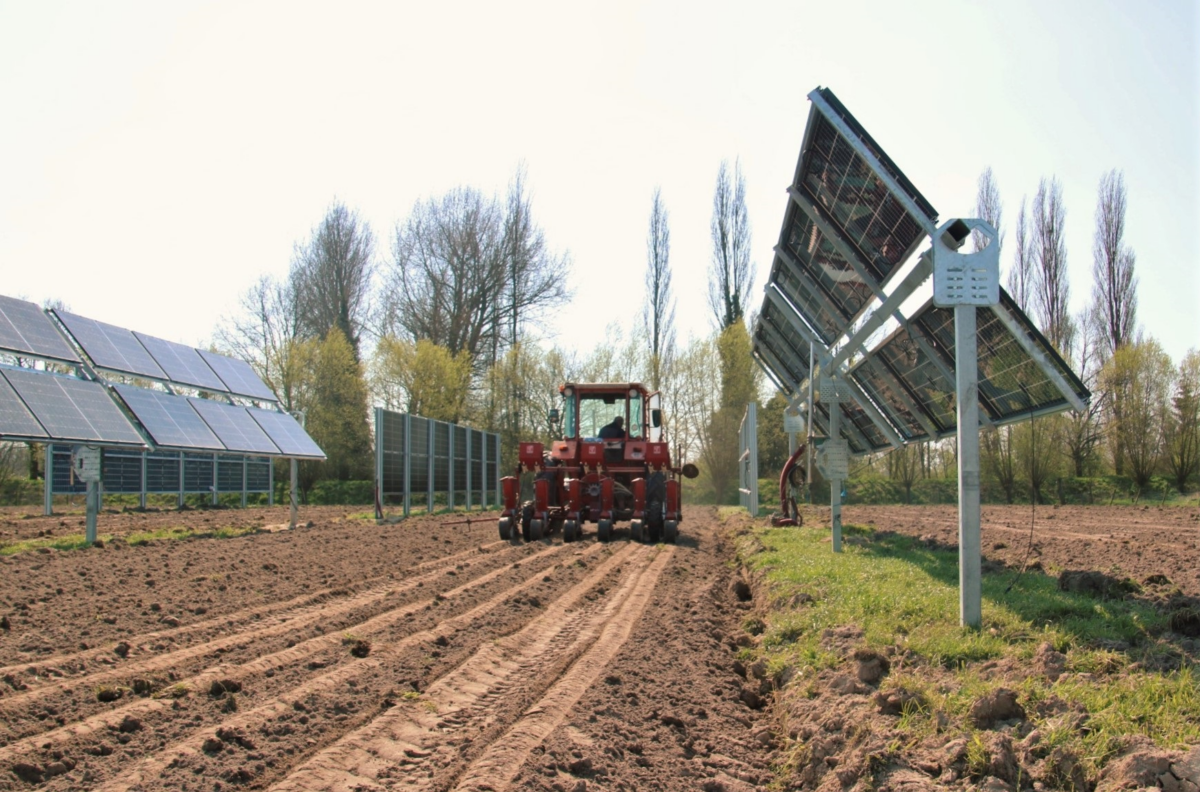The levelized cost of electricity (LCOE) for agrivoltaic bifacial systems based on single-axis trackers is 23% lower than that of agrivoltaic bifacial facilities built on fixed structures, a new study from KU Leuven in Belgium has shown.
“Our cost estimations for this pilot study, revealed similar expenses for both fixed and tracked systems,” the research's lead author, Brecht Willockx told pv magazine. “However, due to the significantly higher specific yield (kWh/kW), the solar tracker exhibited a lower LCOE.”
The researchers conducted a comprehensive comparison between the two system configurations at a testing field located in Grembergen, Belgium, with both systems using the pile drilling technique for their foundations.
The system with the fixed structures was deployed with a row-to-row distance of 9 m to maintain appropriate spacing for crop growth and accessibility. The solar modules have each a nominal power of 455 W and are placed at a maximum height of 2.6 m to minimize any visual impact.
As for the system relying on trackers, the same module types were placed at a height of 2.3 m. “To enhance bifacial gain, the structural elements at the backside are minimized by increasing the gap between the torque tube and module (50 cm) and ensuring longitudinal module spacing (1 cm),” the scientists explained.

Image: KU Leuven
Through their analysis, the academics found that the facility based on trackers outperformed the fixed structure setup in energy yield, resulting in approximately a 35% increase in monthly electricity production. Furthermore, the system using tracking showed improved results in land use efficiency, which takes into account both electrical and agricultural yields.
The Belgian group found that, in the rain-fed 2021 season, the tracking system has achieved 15% more total yield. In the same season, the fixed system achieved a 5% lower yield, meaning it was no better than separate production sites. In the dry 2022 season, the tracked system displayed a 47% increase in total yield and the fixed one an increase of 21%, compared to the reference point.
Popular content
Throughout the rainy growing season of 2021, a smart tracking algorithm, taking into account a trade-off between energy yield and crop yield, was employed, while in the hot and dry season of 2022, the system switched to a traditional full energy tracking algorithm, taking into account only energy yield.
The LCOE for the fixed system constructed by the researchers was found to be €0.10/kWh ($0.107/kWh), while the system with tracking algorithm was €0.077/kWh.
According to the research, those prices hike a bit when considering the crop yield losses that are due to the installation of the PV systems on the field. An additional €0.02/kWh is to be added to the LCOE of the tracked system therefore, while a €0.035/kWh is to be added in the case of the fixed system.
“We believe that the best business model for farmers, investors, and off-takers are power purchase agreements (PPA) contracts, where prices of interspace agrivoltaics are in line with ground-mounted PV,” Willockx added. “However, there is still a significant premium due to the lower installed capacity per hectare and fixed costs.”
The scientists presented their findings in the paper “Performance evaluation of vertical bifacial and single-axis tracked agrivoltaic systems on arable land,” which was recently published in Renewable Energy. “Practical insights and limitations of agrivoltaic systems have been incorporated into the evaluation,” Willockx said.
This content is protected by copyright and may not be reused. If you want to cooperate with us and would like to reuse some of our content, please contact: editors@pv-magazine.com.


1 comment
By submitting this form you agree to pv magazine using your data for the purposes of publishing your comment.
Your personal data will only be disclosed or otherwise transmitted to third parties for the purposes of spam filtering or if this is necessary for technical maintenance of the website. Any other transfer to third parties will not take place unless this is justified on the basis of applicable data protection regulations or if pv magazine is legally obliged to do so.
You may revoke this consent at any time with effect for the future, in which case your personal data will be deleted immediately. Otherwise, your data will be deleted if pv magazine has processed your request or the purpose of data storage is fulfilled.
Further information on data privacy can be found in our Data Protection Policy.